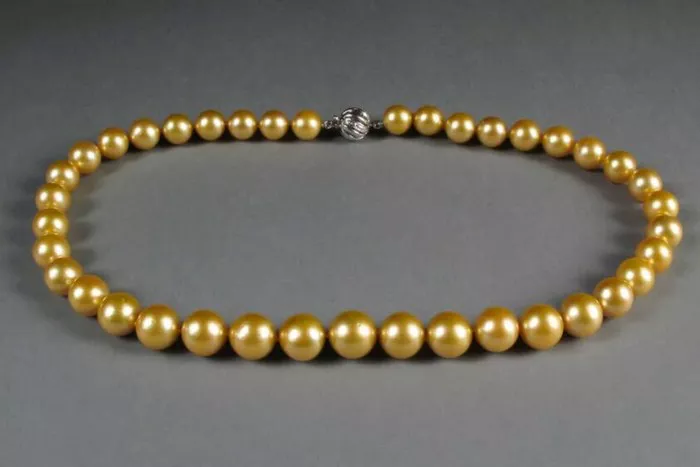In a recent interview with Bizz Buzz, Sachin Kothari, Director of Augmont, discussed the significant impact of the Indian government’s decision to cut import duties on gold. This strategic move has not only increased affordability but has also spurred a notable rise in demand, particularly within the jewellery sector. Kothari provided insights into the implications of this policy change, highlighting the evolving landscape of gold investments in India.
Government’s Duty Cut and Its Effects
The Indian government has recently reduced the import duty on gold from 15% to 6%. This decision has created a substantial shift in the gold market, leading to lower retail prices and enhanced accessibility for consumers. Kothari emphasized that this reduction has effectively driven higher demand, particularly in the jewellery sector, which has long been a cornerstone of India’s gold consumption.
“The reduction has led to increased affordability and higher demand,” Kothari stated. This surge in demand is especially pronounced during festive and wedding seasons when gold purchases traditionally peak. He noted that while businesses may face potential inventory losses due to the drop in prices, the overall rise in consumer demand is expected to counterbalance these risks.
The Impact on Sales and Inventory
The recent duty cut has translated into higher sales volumes for businesses in the gold sector. With gold becoming more affordable, consumers are more likely to make purchases, particularly in the jewellery market, which is often influenced by cultural and seasonal factors.
Kothari pointed out that the increased consumer interest offsets the challenges posed by potential inventory losses. “While the reduced prices may lead to inventory challenges, these are expected to be mitigated by lower marketing costs and the natural increase in demand,” he explained. This balance is crucial for businesses looking to navigate the evolving market landscape while maintaining profitability.
Price Disparity and Market Dynamics
Kothari also discussed the ongoing disparity between gold prices in India and those in international markets. Over the past few months, several factors have contributed to this variance. Notably, currency fluctuations, particularly the strength of the Indian rupee against the dollar, play a significant role in determining gold prices.
Local taxes and import duties further complicate this landscape, creating additional pricing discrepancies. Cultural and seasonal demand changes also influence local prices, making them less aligned with international trends. The recent import duty cut has added another layer to this dynamic, impacting how local prices are structured.
The Role of Technology in Gold Investment
At Augmont, technology is integral to ensuring the security and transparency of digital gold investments. Kothari highlighted the company’s commitment to leveraging advanced systems that guarantee accuracy and safety in transactions. One of the key innovations introduced by Augmont is the use of blockchain technology.
This technology allows for a secure and immutable record of ownership, enabling customers to track their investments with real-time transparency. Kothari explained that this level of transparency is crucial for building trust among consumers who are increasingly looking for convenient and reliable ways to invest in gold.
Enhancing Security Through Encryption
In addition to blockchain, Augmont employs robust encryption protocols to protect customer data and transactions from potential cyber threats. Kothari assured that every transaction is safeguarded, providing peace of mind for customers investing in digital gold. The combination of blockchain and encryption technologies reflects Augmont’s commitment to maintaining high security standards in an evolving digital landscape.
Changing Preferences in Gold Investments
The dialogue around lab-grown diamonds highlights a broader trend of shifting consumer preferences. In India, there is a growing interest in digital gold, Exchange Traded Funds (ETFs), and sovereign gold bonds. These alternatives appeal to consumers seeking convenience and transparency in their investment choices.
Kothari explained that these changing preferences indicate a generational shift in how individuals perceive and invest in gold. “In India, fewer than 5% of women have historically owned diamonds, while 95% aspire to. We are now seeing a more significant number of consumers, including those who already own traditional gold, explore digital options,” he noted. This shift reflects a growing acceptance of alternative forms of gold investment that align with modern consumer expectations.
Future Outlook for the Jewellery Sector
As India’s gold market continues to evolve, Kothari remains optimistic about the future of the jewellery sector. The government’s recent import duty cut is expected to sustain increased demand, particularly as consumers become more attuned to the benefits of digital gold investments.
Jewellers and businesses in the sector must adapt to these changes by embracing technology and diversifying their offerings. By focusing on transparency and security, companies can build consumer trust and foster a loyal customer base.
Kothari concluded by emphasizing the importance of innovation in the jewellery sector. “As the market changes, businesses must be proactive in responding to consumer preferences and market dynamics. Technology will play a key role in shaping the future of gold investments in India,” he asserted.
Conclusion
The reduction of import duties on gold has had a profound impact on India’s jewellery sector, as highlighted by Sachin Kothari, Director of Augmont. This move has increased affordability, driving higher demand particularly in the jewellery market.
While potential inventory losses present challenges, the overall rise in consumer interest and the integration of technology in gold investments signal a promising future for the industry. As consumers increasingly seek transparency and convenience, traditional jewellers must adapt to remain relevant in an evolving market.
The next few years will be critical in determining how the gold jewellery sector navigates these changes and capitalizes on new opportunities. The interplay of consumer demand, technological advancements, and government policies will shape the future landscape of India’s jewellery industry, offering a glimpse into a new era of gold investment.
Related topics:

